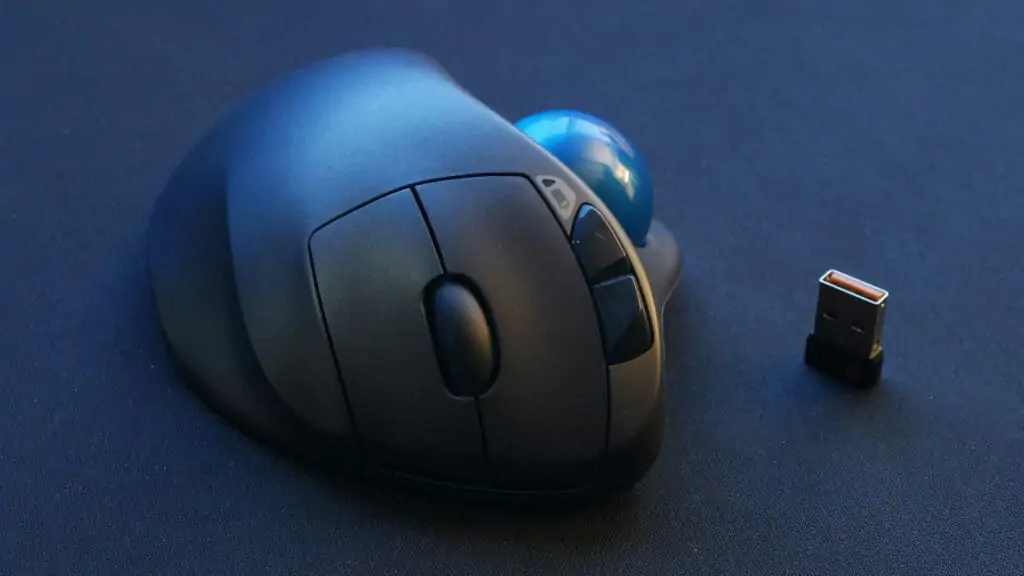The Logitech M570 and M575 are near-identical wireless trackballs that are both excellent choices for work and play, at the office and at home.
Is the new M575 a worthy successor to its predecessor, or is the M570 still the tried and true thumb-ball champion?
See who wins in the battle of master and apprentice.
The Verdict: Logitech M575
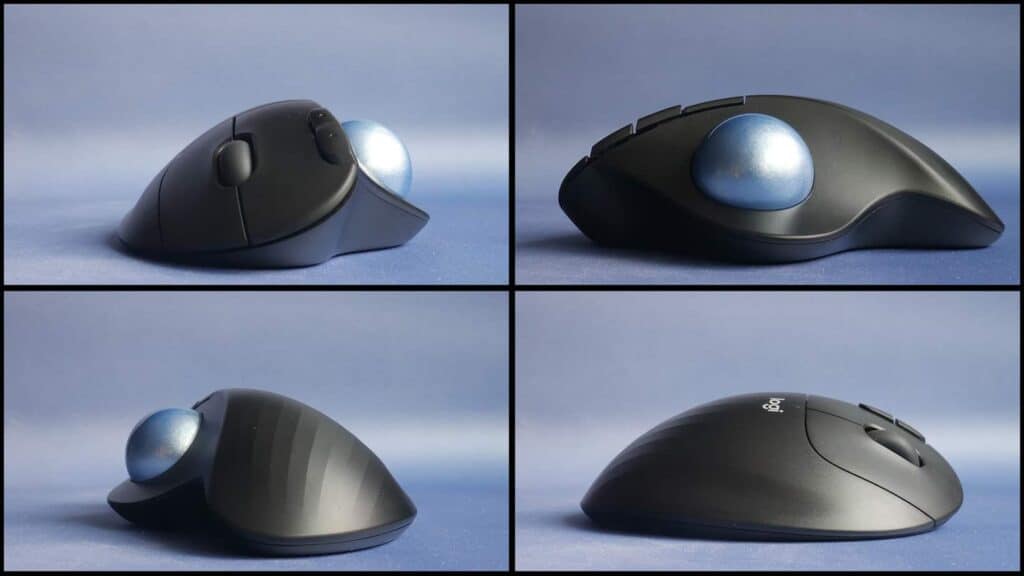
The Logitech M575 is a better all-around trackball mouse, with a new and improved design that beats out the classic M570. The more modern feel and added Bluetooth connectivity are both welcome additions to the M575.
The shape is slightly changed while still retaining the same overall footprint.
The tracking is just as smooth, with similar build quality but a different plastic texture that makes the M575 look and feel more premium, with the help of of both a classic charcoal and modern white colorways.
The reliable 2.4ghz returns along with Bluetooth connectivity that is more convenient and adds a level of functionality.
For this reason, the Logitech M575 claims the top spot as the overall winner.
Whether you prefer the proven practical M570 or the productive M575, you can’t and shan’t go wrong with a Logitech thumb-ball.
A Closer Look at Both Trackballs
With near identical silhouettes, designs, and feature sets, the M570 and M575 are closely matched trackballs with Bluetooth being the main feature that separates the M575 from its older sibling.
As we see in these matchups, however, Bluetooth may not be enough to give the M575 the edge.
Let’s see which of these two Logitech trackballs you should roll with.
Ergonomics & Comfort: Winner = Logitech M570
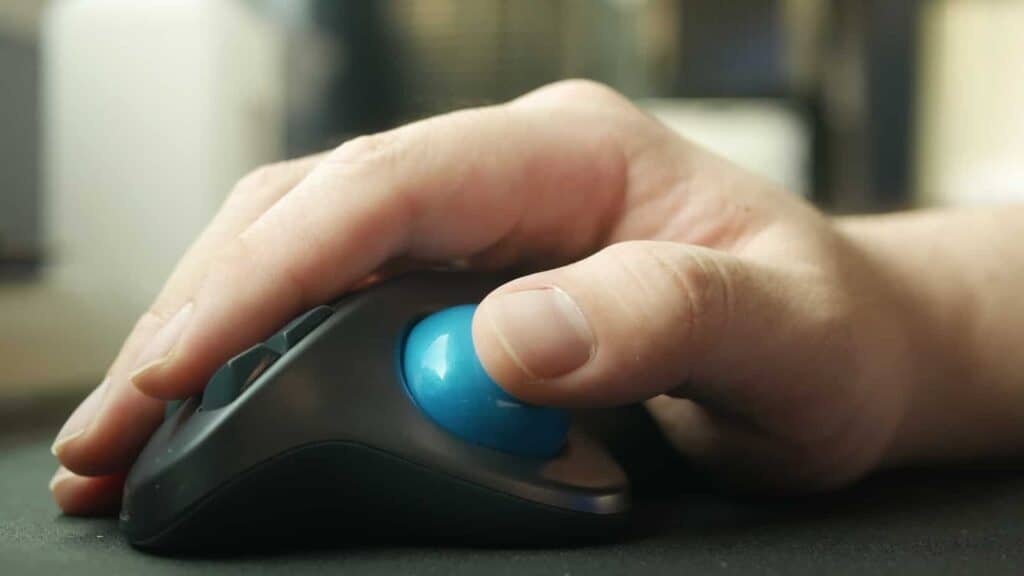
The M570 sports one of the best and most comfortable ergonomic designs to date, regardless of trackball or traditional mouse.
The M575 updates the design by using simpler curves for a more modern design, but how does it compare to the M570?
The M570’s curves are more complex, often using sharper angles and even S-curves where necessary.
This leads to a simple but effective shape that naturally fits hands of all shapes and sizes.
Every angle provides a comfortable contour formed to the shape of your palm.
Each finger has a position to rest on, and all of the buttons are easily accessible.
The trackball itself is positioned on the side, and the size is ideal for a single thumb. The overall angle is comfortable, reducing pronation for a more natural position, without going too vertical.
The M575 uses simpler, rounder curves with more gradual, even angles.
Though the design is more modern and appealing, the shape itself is not quite as comfortable as the M570.
A slight change in the curves used means that you can feel the “hump” more protruding into your palm.
Rotating the M575 counter-clockwise slightly helps the comfort issue, but may change how easy the function buttons can be reached.
If you have larger hands you may find your fingers being too long or your palm too wide for the M575, and your ring and pinky fingers may not sit or fit as comfortably on the side of the mouse.
For this reason, the M570 wins out in the ergonomics and comfort department. If comfort is all that matters, this is your best choice.
Build Quality: Winner = Tie

Both the M570 and M575 feature full-plastic construction, and neither creaks nor flexes under the weight of your hand.
The difference in the two lies in the texture of the plastics.
The M570 uses a “powder coat” finish on the plastic, leaving the finish like a matte metallic grey with a smooth yet somewhat gritty texture.
The M575 uses a textured plastic that feels smoother, but added ridges in the surface cause the the plastic to feel more rigid in comparison.
The coating and finish on the M570 does not look as aesthetically pleasing as the M575, but the uniform texture also makes the trackball feel more natural and less noticeable while you’re using it.
Though the texture on the M575 may look more modern and feel more premium, it may also be less desirable to have mouse under your palm that literally feels more “edgy”.
It’s more a matter of preference in the look and feel, as both trackballs are solid, well built, and will last for years to come.
Both trackballs also use Omron switches, which have had questionable quality control in recent years, most notably causing buttons to “double-click”.
Though none of my personal Logitech devices have had this issue, your mileage may vary.
As the M575 is a newer model, you may have better luck with newer stock, but only time will tell if the M575 is also afflicted.
Design: Winner = Logitech M575
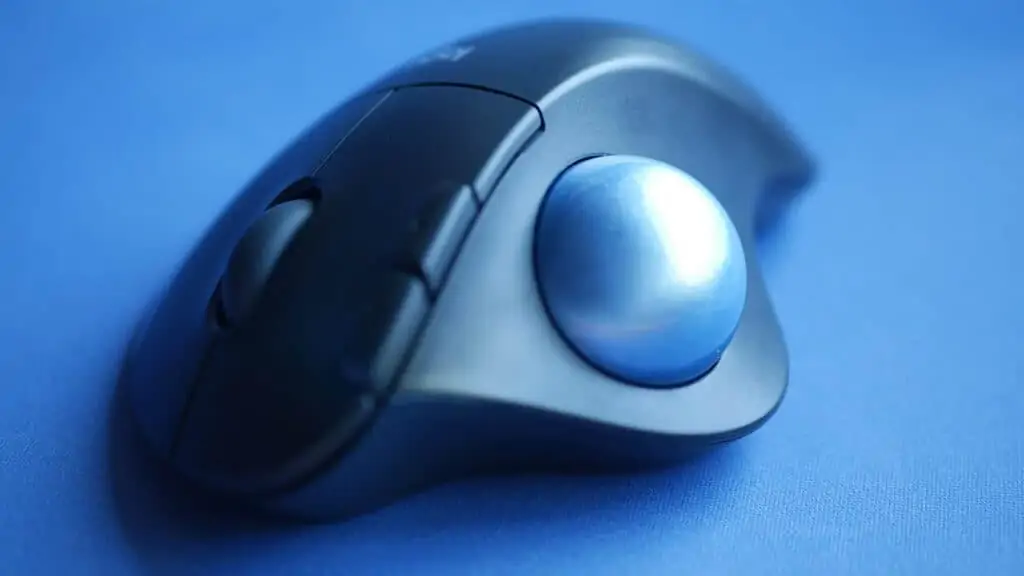
If we’re judging the M570 and M575 on looks and aesthetics alone, then the M575 is the clear victor with a sleeker look and two colorways including a clean white model with icy-blue ball.
While the M570 certainly doesn’t look bad by any means, the 10-year old design and dark grey colorway do not lend themselves well to contemporary aesthetics and tastes.
Simplicity does have its place, however, and for many people, form follows function and prettiness takes a back seat to performance and practicality.
The M575, however, uses both curves and lines to describe its form.
Using rounder curves to create its ergonomic silhouette, the M575 also uses sculpted ridge lines across the entire top surface, causing light and shadow to clash in contrast and break up an otherwise monotonous design.
Offered in both a dark-grey graphite and fresh white colorway, the M575 takes the prize in design, though it may sacrifice a slight bit of comfort in return.
Functionality and Wireless: Winner = Logitech M575
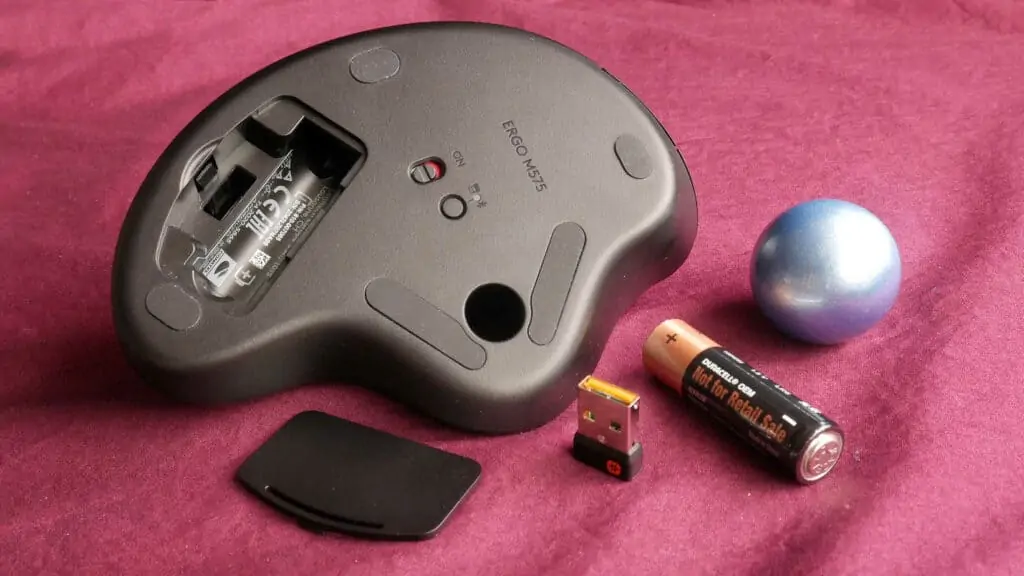
The Logitech M570 and M575 trackballs both use the same amount of buttons, in the exact same positions, and both use the same sized ball with a similar level of smoothness.
Both trackballs can also be customized and adjusted via software, and both use the same high-speed 2.4ghz wireless connections with Logitech Unifying Receiver.
The M575 tracking sensor is also improved, with a max DPI of 2000 compared to the 1400DPI max of the M570.
Having a higher maximum tracking resolution doesn’t necessarily mean a better experience, but it does mean improved speed and precision, and possibly better performance at the same sensitivity levels.
The Logitech M575 has another trick up its sleeve by adding Bluetooth wireless connectivity as well.
While many shun the notion of Bluetooth peripherals for the extra lag and latency it may bring, the convenience and practicality cannot be denied.
Bluetooth means not only can you connect with a multitude of desktop and mobile devices, you can also switch between two devices fairly easily if you use Bluetooth on one, and 2.4ghz on the other.
Having Bluetooth can be important for not only switching between devices, but also if the 2.4ghz signal is too unstable due to range, line-of-sight, crossed signals, and even just from using a USB 3.0 port.
While Bluetooth may not be as fast as 2.4ghz wireless, it does prove to be more convenient and reliable when an unstable wireless signal is of concern.
Software: Winner = Tie
Whether you use the M570 with Logitech Setpoint or the M575 with Logitech Options, you get the same level of control and customization with both software packages.
Both Setpoint and Flow are relatively lightweight softwares that allow you to control everything from pointer speed, button functions and layout, and even pairing your trackball with a new Logitech Unifying Reciever.
You can even set application-specific functions.
Setpoint is much more basic in terms of the UI, but it does not lack any of the features that Logitech Options provides.
As both the M570 and M575 are fairly simple trackballs that only feature two extra buttons and no horizontal scroll option, you will probably only ever have to open Setpoint and Flow when you are first setting up your trackball.
Best Overall Trackball: Logitech M575
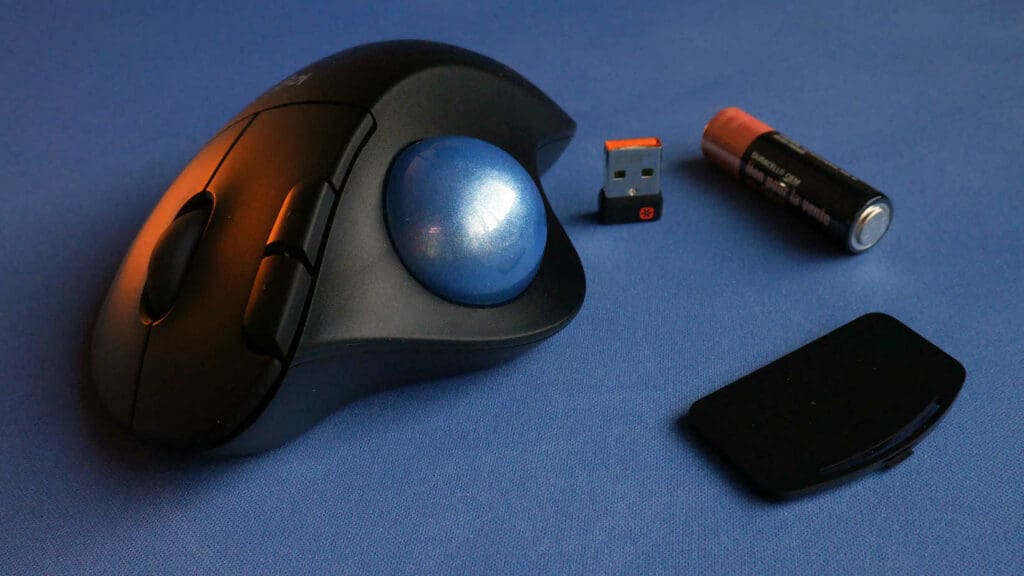
After over a decade at the top of the mountain, the M570 may have finally found its match in the new Logitech M575.
Though not quite as comfortable, the M575 proves to be the superior trackball when price is of no concern due to the simple addition of a reliable Bluetooth, improved tracking sensor, and refreshed design and colorways.
Both the M570 and M575 are excellent choices at their respective price points, but they each have their own target user.
For professionals and students on the go who value the mobility and convenience of Bluetooth, the M575 is the trackball for you.
If you don’t need the Bluetooth, and just want a practical, comfortable, and more affordable choice, stick with the tried and true M570.
Thank you for reading!

